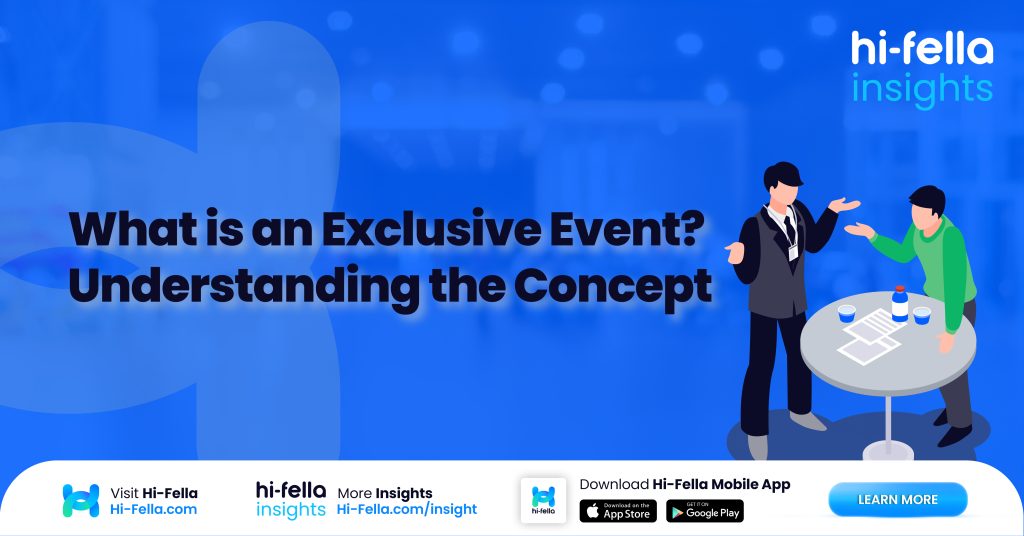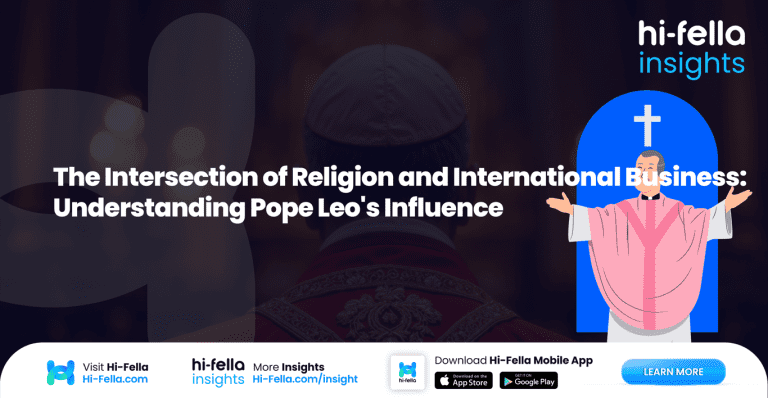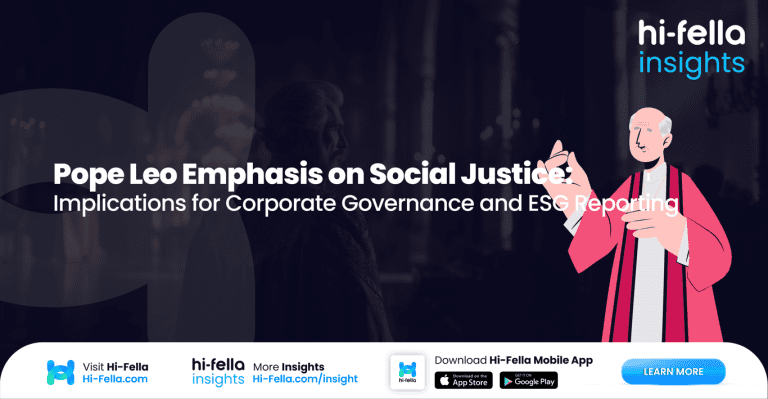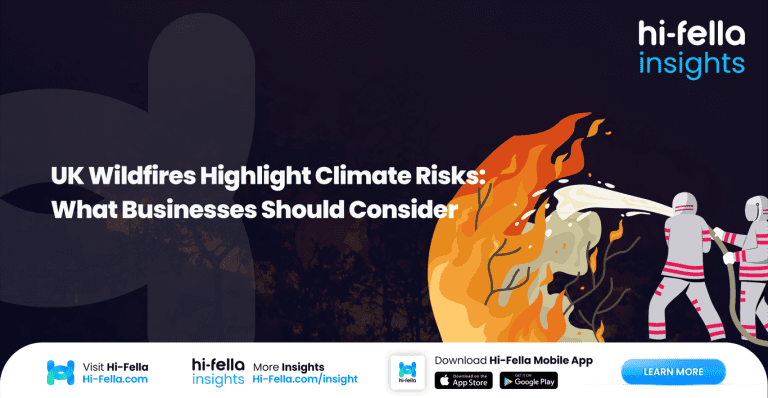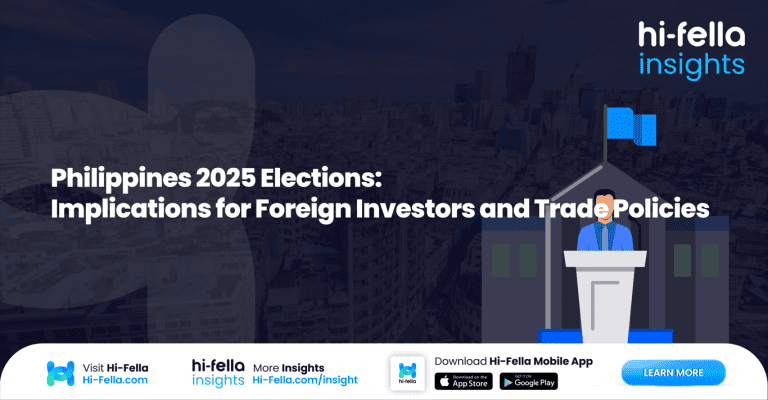Why fit in when you were born to stand out?” If that’s your motto, then Personalized Virtual Expos are your playground! Imagine a gathering so exclusive that even the bouncers at the hottest clubs would be envious. These events are where the magic happens—where the guest list is shorter than a TikTok video and the connections are as valuable as a golden ticket to Willy Wonka’s factory. Get ready to dive into a world where networking feels less like a chore and more like a fabulous soirée!
Now, let’s get to the juicy part: why are Personalized Virtual Expos the secret sauce for business success? They’re not just about sipping fancy cocktails and pretending to know what truffle oil is; they’re about creating genuine connections in an intimate setting. With platforms like Hi-Fella’s Personalized Virtual Expo/Expo, you can curate experiences that allow you to target specific audiences or go global, all while keeping control over who gets in and who doesn’t. So, whether you’re an Indonesian trade attaché looking to showcase your country’s finest products to American buyers or a startup ready to make waves, Personalized Virtual Expos are your ticket to transforming casual encounters into powerful partnerships!
What Actually Personalized Virtual Expo Held by Hi-Fella is?

Hi-Fella offers flexible and innovative tools designed for global business connections. These events are not your run-of-the-mill virtual gatherings; they are tailored experiences that allow organizers to create a unique atmosphere for networking and showcasing products. With Hi-Fella, you can choose from three distinct options for your online exhibition, ensuring that your event meets your specific needs and goals.
Personalized Virtual Expo is an exclusive virtual exhibition solution from Hi-Fella, specifically designed to meet the unique needs of event organizers, trade show organizers, brand exhibitions, trade chambers, KADIN, and related institutions. With Personalized Virtual Expo, you have the freedom to create a fully customized virtual event tailored to your vision and objectives. This product offers flexibility that allows you to:
- Design the Event Format That Fits Your Needs: Choose the theme, design, and structure of your event to reflect your organization’s or brand’s identity.
- Easily Manage Exhibitors: Invite relevant exhibitors and organize categories according to your industry’s needs.
- Target the Right Audience: Combine Hi-Fella’s global user base with your specific target audience to maximize impact.
- Showcase Exclusive Branding: Get a virtual exhibition space that presents your branding in an exclusive and professional way.
One of the standout features of Hi-Fella’s Personalized Virtual Expos is the Targeted Reach Events option. This allows organizers to focus their efforts on a specific country or expand their reach to a global audience. Whether you want to connect with local buyers or tap into international markets, Hi-Fella provides the tools to make it happen. The platform’s Customizable Experience feature gives organizers full control over attendee access and exhibitor visibility, ensuring that the right people are in the room (or virtual space) to foster meaningful connections.
What makes Personalized Virtual Expo unique?
- Complete Exclusivity: This event is entirely yours—designed to reflect your values and mission.
- Advanced Technology: Powered by Hi-Fella’s premium features, including private video calls, real-time translation, and playback sessions, ensuring a world-class experience.
- Efficiency and Cost-Effectiveness: Without geographical barriers and high logistics costs, you can host an impactful and result-driven event.
For example, imagine an Indonesian trade attaché in the U.S. using Hi-Fella’s platform to promote Indonesian products directly to American buyers. Gone are the days of tedious matchmaking processes and missed opportunities! With Hi-Fella, the trade attaché can create an engaging online exhibition that showcases the best of Indonesia, connecting with potential buyers seamlessly and effectively. This innovative approach not only enhances visibility for exhibitors but also streamlines the process of building valuable business relationships, making Hi-Fella’s Personalized Virtual Expos a game-changer in the world of online exhibitions.
Who Is Personalized Virtual Expo For?
- Event Organizers (EOs): To create standout virtual exhibition experiences that are easy to manage.
- Trade Show Organizers: To expand reach and attract a global audience without the constraints of distance.
- Brand Exhibitions: To promote products in an interactive and efficient manner.
- Trade Chambers & KADIN: To support local businesses and connect them with global opportunities.
Hi-Fella emphasizes user engagement through interactive features such as live Q&A sessions, virtual booths, and networking lounges. These elements encourage real-time interaction between exhibitors and attendees, fostering a dynamic environment that mimics in-person events. The platform also supports analytics and reporting tools, allowing organizers to track engagement metrics and gather valuable insights post-event. This data-driven approach enables continuous improvement for future exhibitions, ensuring that each event is more successful than the last.
Personalized Virtual Expo Features in Hi-Fella
1. Targeted Reach
One of the standout features of Hi-Fella’s Personalized Virtual Expos is the Targeted Reach capability, which allows organizers to tailor their exhibitions to be either country-specific or global. This means that whether you’re a local business looking to connect with buyers in your own country or an international brand aiming to expand your reach, Hi-Fella has you covered. By focusing on specific markets, organizers can ensure that their messaging resonates with the right audience, maximizing the potential for meaningful connections and successful outcomes.
This targeted approach not only enhances the relevance of the event but also increases engagement among attendees. For instance, if a company wants to showcase its products to a specific demographic in a particular country, they can create an event that speaks directly to that audience’s needs and preferences. This level of customization helps businesses cut through the noise and stand out in a crowded marketplace, making their exhibitions more effective and impactful.
2. Customizable Experience
The Customizable Experience feature of Hi-Fella allows organizers to have complete control over attendee access and exhibitor visibility. This means that you can decide who gets to see what, ensuring that sensitive information is only shared with the right people. Organizers can create different tiers of access, allowing for exclusive content to be available only to select attendees, which can enhance the overall experience and foster a sense of exclusivity.
Moreover, this level of customization extends to the exhibitor’s visibility as well. Organizers can highlight specific exhibitors or products, ensuring that they receive the attention they deserve. This flexibility not only enhances the attendee experience but also empowers exhibitors to showcase their offerings in the best possible light. By tailoring the event to meet the needs of both attendees and exhibitors, Hi-Fella creates a dynamic environment that encourages interaction and engagement.
Add-On Features
1. Private Video Call During the Live Exhibition
Hi-Fella offers the Private Video Call feature during live exhibitions, allowing attendees and exhibitors to connect one-on-one in a more personal setting. This feature is perfect for fostering deeper conversations and building relationships that go beyond the typical chat or messaging options. Attendees can schedule private calls with exhibitors to discuss products in detail, ask questions, or negotiate deals, making the experience more interactive and engaging.
This capability not only enhances the networking potential of the event but also allows for real-time feedback and discussions. By facilitating direct communication, Hi-Fella ensures that both exhibitors and attendees can make the most of their time during the exhibition, leading to more productive interactions and potentially higher conversion rates.
2. Real-Time Translation
In our increasingly globalized world, language barriers can often hinder effective communication. Hi-Fella addresses this challenge with its Real-Time Translation feature, which allows attendees from different linguistic backgrounds to engage seamlessly. This feature ensures that language is no longer a barrier to participation, enabling exhibitors to connect with a diverse audience and expand their reach.
With real-time translation, attendees can interact with exhibitors and other participants in their preferred language, making the experience more inclusive and accessible. This not only enhances the overall event experience but also opens up new markets for businesses, allowing them to tap into audiences they may have previously overlooked due to language differences.
3. Fella Gift
To add a touch of excitement and engagement to the online exhibition experience, Hi-Fella introduces the Fella Gift feature. This allows organizers to offer special gifts or incentives to attendees, creating a fun and memorable experience. Whether it’s a discount voucher, a free sample, or exclusive content, these gifts can encourage participation and keep attendees engaged throughout the event.
The Fella Gift feature not only enhances attendee satisfaction but also serves as a powerful marketing tool for exhibitors. By offering something of value, businesses can attract more visitors to their booths, increase interaction, and ultimately drive more leads. It’s a win-win situation that adds an element of surprise and delight to the online exhibition experience.
4. Branding Quiz
Engagement is key in any exhibition, and Hi-Fella’s Branding Quiz feature is a fun way to keep attendees involved. This interactive element allows organizers to create quizzes related to their brand or products, encouraging attendees to participate and learn more about what’s being showcased. Not only does this add an element of gamification to the event, but it also helps reinforce brand messaging in a memorable way.
Quizzes can be tailored to different audiences, making them a versatile tool for engagement. Participants can compete for prizes or recognition, which can further incentivize participation. By incorporating the Branding Quiz feature, Hi-Fella ensures that attendees remain engaged and invested in the exhibition, leading to a more dynamic and enjoyable experience.
5. Analytics Report
Understanding the effectiveness of an event is crucial for future planning, and Hi-Fella provides comprehensive Analytics Reports to help organizers gauge success. These reports offer valuable insights into attendee behavior, engagement levels, and overall event performance. Organizers can track metrics such as booth visits, interaction rates, and conversion statistics, allowing them to assess what worked well and what could be improved.
With this data at their fingertips, businesses can make informed decisions for future exhibitions, tailoring their strategies to better meet the needs of their audience. The Analytics Report feature empowers organizers to refine their approach, ensuring that each subsequent event is even more successful than the last.
6. Banner Advertisement
Visibility is key in any exhibition, and Hi-Fella’s Banner Advertisement feature allows exhibitors to enhance their presence within the virtual space. This feature enables businesses to showcase their brand prominently through eye-catching banners that can be displayed throughout the event. Whether it’s promoting a new product, announcing a special offer, or simply increasing brand awareness, banner ads are an effective way to capture attendee attention.
By strategically placing banners in high-traffic areas of the exhibition, exhibitors can maximize their visibility and drive more traffic to their booths. This added layer of promotion not only enhances the overall event experience but also provides exhibitors with additional opportunities to connect with potential customers.
7. Playback and Scheduled Private Video Calls
Hi-Fella understands that flexibility is essential in today’s fast-paced world, which is why they offer the Playback and Scheduled Private Video Calls feature. This allows attendees to revisit key presentations or discussions at their convenience, ensuring that they don’t miss out on valuable content. Whether someone had to step away for a moment or simply wants to review a session, this feature enhances the overall accessibility of the event.
Additionally, the ability to schedule private video calls post-event means that connections made during the exhibition can continue to flourish. Attendees can follow up with exhibitors or other participants at a time that suits them, fostering ongoing relationships and discussions. This combination of playback options and scheduled calls ensures that the networking potential of Hi-Fella’s Personalized Virtual Expos extends well beyond the live exhibition, creating lasting connections and opportunities for collaboration.
Hi-Fella Personalized Virtual Expo Price
Hi-Fella’s pricing is so friendly, it might just give your wallet a hug! Here’s a detailed breakdown of the costs involved:
1. Event Creation Fee
The initial cost to set up your event is $1,000 for a three-day exhibition. This fee covers the overall organization and management of the event, ensuring that everything runs smoothly from start to finish.
2. Go Live per Exhibitor
Each exhibitor participating in the event incurs a fee of $30. This nominal charge allows exhibitors to showcase their products or services during the live exhibition, making it an affordable option for businesses of all sizes.
3. Add-Ons
Hi-Fella provides a variety of optional add-on features to enhance the exhibition experience. These include:
- Private Video Call during Live Exhibition: $30
- Real-Time Translation: $65
- Fella Gift: $50
- Branding Quiz: $50
- Analytic Report: $30
- Banner Advertisement: $75
- Playback and Scheduled Private Video Calls: $60
These add-ons allow organizers to customize their events further, providing additional tools for engagement, analytics, and marketing.
4. Optional Expo Campaign
For an additional $3,000, organizers can opt for the Expo Campaign add-on. This includes promotional activities before and after the event on Hi-Fella’s social media, SEO-powered insights, and a press partner boost to maximize visibility and reach.
How to Join Hi-Fella’s Personalized Virtual Expos?
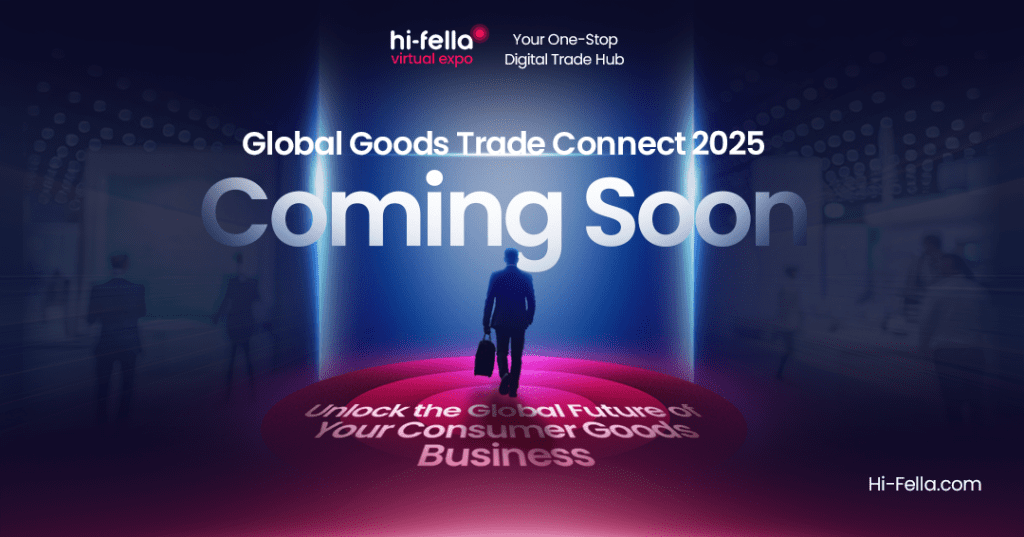
Joining Hi-Fella’s Personalized Virtual Expos is as easy as pie—if pie were a seamless online experience! Simply head over to Hi-Fella’s online exhibition page, and you’ll find all the information you need to get started. Whether you’re an exhibitor looking to showcase your products or an attendee eager to explore new opportunities, the platform guides you through the process with user-friendly steps. Just sign up, choose your event options, and get ready to connect with a global audience. It’s time to make your mark in the virtual exhibition world—no heavy lifting required!

